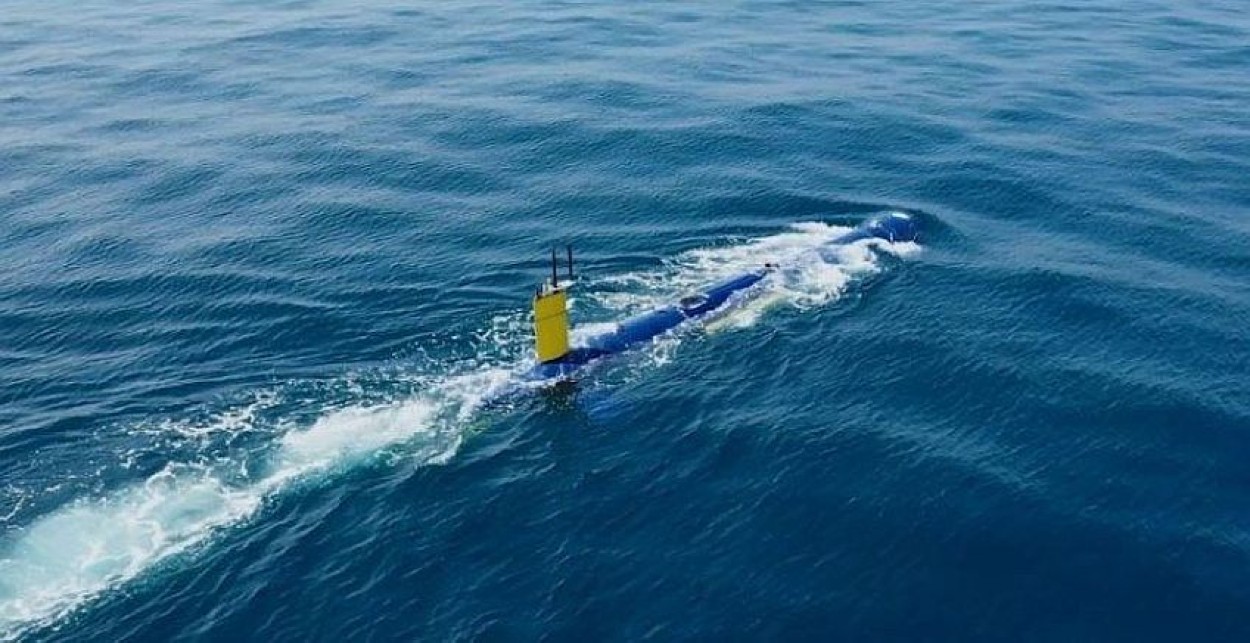Israel’s defense electronics company Elta has developed the country’s first unmanned underwater vehicle (UUV) with significant autonomous operation capabilities for naval purposes.
Called the BlueWhale ELI-3325, it is intended for reconnaissance and surveillance tasks, including detecting submarines and mines.
The UUV has successfully undergone thousands of autonomous operation testing hours, including intelligence-gathering for maritime and coastal targets, acoustic intelligence, and identifying the presence of naval mines.
The autonomous submarine can perform many roles of a manned submarine for several weeks at a stretch, aided by its uncrewed operation that eliminates the limits of human endurance. The absence of human operators on board also minimizes operational and maintenance costs.
Underwater Spy
Like manned submarines, BlueWhale can undertake covert intelligence-gathering above the sea surface, detect submarines and underwater targets, gather acoustic intelligence, and search for and detect naval mines on the seabed.
It is equipped with a telescopic mast, like the periscope of a manned submarine, several meters high, on which are mounted radar and electro-optical systems for detecting sea and coastal targets.

The promotional video shows the mast that folds out from the top and vertically extends another mount holding a large electro-optical system. Whether this is the periscope is unclear since brief shots of another mast sticking out of the water, right behind the extendable mast near the propeller, also appear in the video.
This could be the satellite communications module IAI says is fitted on the mast and transfers the “gathered data in real-time to command posts, anywhere in the world, at sea or on land.”
Video Shows Tantalizing Details
The propeller has, however, faded out, indicating the developers want to keep its design and configuration aspect secret. Underwater propeller and propulsion system designs are niche technology and greatly affect speed and acoustic characteristics. Russian promotional videos of its Poseidon torpedo, too, had faded the propeller on the screen.
Its primary role appears to be aiding anti-submarine warfare, particularly in “submarine detection and acoustic intelligence,” where diverse noise emission patterns of various makes of submarines are analyzed and stored for identification.
The gathering of data is also enabled using a towed sonar, tens of meters long, tethered to the BlueWhale. The video calls this sonar a ‘bi-static sonar array,’ where the conical-shaped devices have two horizontal stabilizers. It also has sonar arrays installed on both sides of the platform. These are Synthetic Aperture Sonars (SAS) for mine detection.
“The BlueWhale has a sensor suite to help ensure its safe transit underwater or near the surface. In recent years, several international patents have been registered regarding the development of the system,” said a statement from the company.
BlueWhale has a length of 10.9 meters, a diameter of more than 1.1 meters, and a weight of 5.5 tons. The power plant is electric with batteries, and autonomy for up to 30 days is declared. It has an operating speed of 2-3 knots maximum speed of up to 7 knots.
According to the video, the UUV can travel from the port to the mission area autonomously and has a “modular” design, where various systems can be swapped out for others based on the need and mission profile. The company says this is customizable to “customer needs,” meaning the platform is clearly intended for export.

Use In War
Surveillance of adversary ports seems to be the primary capability since the UUV is shown predominantly performing that task in the video. It is then claimed to carry Communications Intelligence (COMINT) and Electronic Intelligence (ELINT) payloads. The latter is portrayed as detecting radar emissions in a small computer-generated rendition.
With Iranian retaliatory action, the submarine would have great utility in attacking Iranian tankers in their periodic shadow war in the Mediterranean and Red Sea. Aiding naval special operations forces in identifying targets and undertaking reconnaissance immensely helps such irregular warfare.
Whether the UUV can be launched from other Israeli Navy Dolphin-class submarines is unknown. Neither is it clear if the system was developed following a specific request by the Israeli Defense Forces (IDF). But the possibility of at least one unit being experimented with to be integrated with existing systems for developing tactics cannot be ruled out.
- The author can be reached at satamp@gmail.com
- Follow EurAsian Times on Google News





